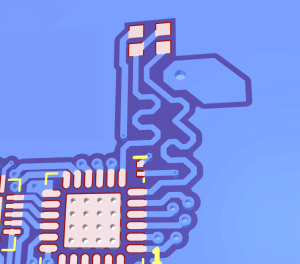Wiktionary defines a suicide burn as: "A method of landing a rocket vehicle using rocket thrust, where a precisely timed and metered rocket burn, at the moments before touchdown, is used to soft-land a rocket on its tail." Something similar to this is desired in speedrun landings, although some margin of error should be included to be RTA viable. If you've taken intro physics, you can imagine setting up this problem. With known constant deceleration, determine the desired velocity at a given height so that the craft reaches height = 0m at vertical speed = 0m/s. I leave this as a problem for the reader, which should result in v = sqrt(2ad). I made a handy log-log chart [https://imgur.com/a/al7P96l] that displays this solution for different max acceleration, which you can look up in map view. The chart works for any body without atmosphere; you just need to subtract the surface acceleration. Note that your acceleration increases as you use more fuel, but this is a good place to start. A method that works well for me is to have a list of desired heights at different speeds (100 to 400 m/s) to use as a quick reference. I also start a burn by cancelling all horizontal speed and end by coasting under the impact tolerance (12m/s in my case). I burn until I reach the next speed value, then wait until I reach the next height. I actually have 2 columns: 50% thrust and 100% thrust. This gives you a window to allow some margin for error. I like to use nice round numbers (ex. 300 m/s; 10km, 6km). As you become more consistent, you can use physics warp for faster times overall. I would be careful doing this right before landing if you have a large engine. Although the "Terrier" engine is slower, physics warp can result in similar times to using the "Swivel." I've found the lower thrust sensitivity makes the "Terrier" easier to land. In IGT runs, reaction time is less important and TWR is probably lower, so calculations are more necessary to avoid crashing. One strategy is to place a maneuver node at the surface, cancelling all velocity. Naively, one would start burning when the time to the node equals the burn time. However, the time to the node is actually longer since you will be decelerating. Assuming constant deceleration, you actually want to burn when the altitude is d = t_burn*v_burn/2. I usually start burning 20% higher for my margin for error. Remember you can pause in IGT runs without losing time, which gives you time to plug numbers into your calculator. In this case, an optimal suicide burn is much less important than your craft design and delta-V budgeting (tens of seconds vs. tens of minutes). Just burn early enough to avoid crashing. That's all I have to say about suicide burns. In the wise words of Scott Manly, "Fly safe."





